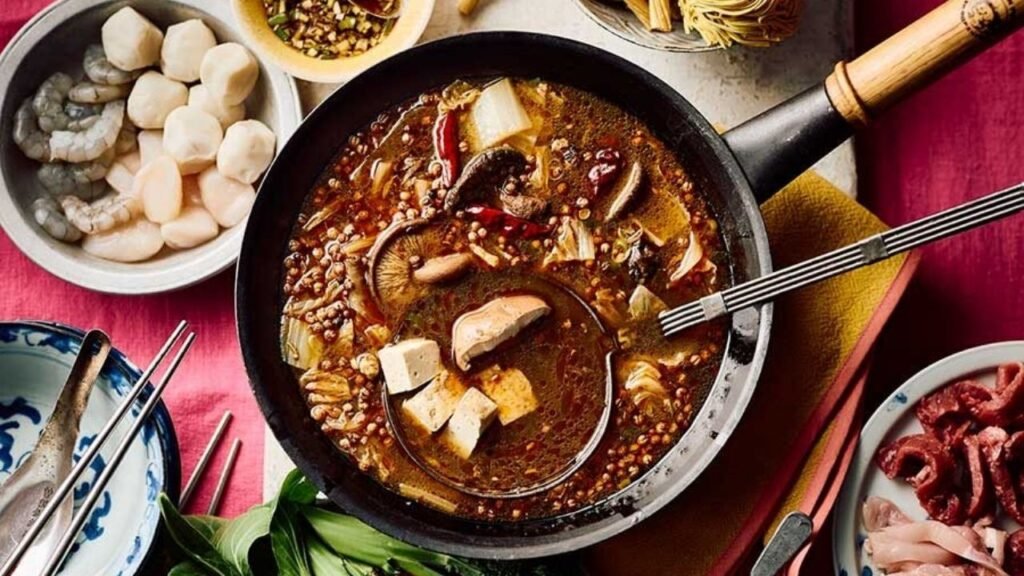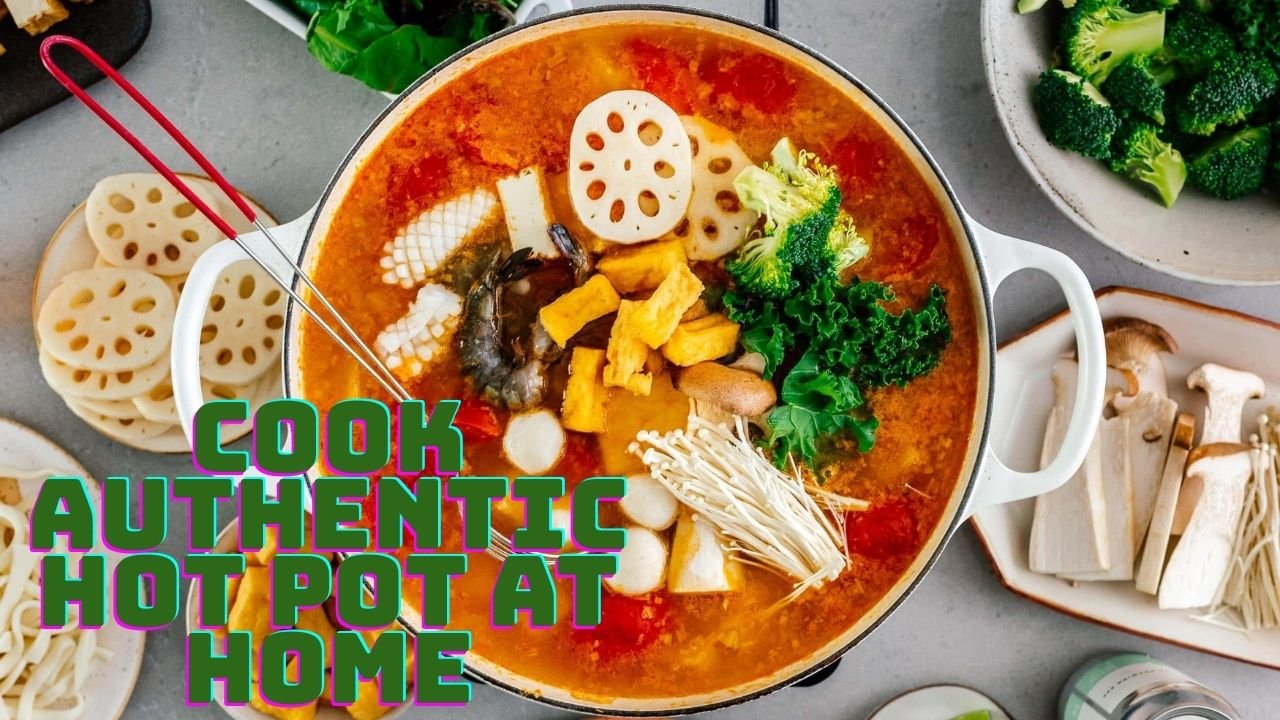Hot pot, additionally known as “huǒ guō”, is one of the most beloved and social eating traditions in Chinese cuisine. It’s extra than only a meal—it’s an revel in. Families and buddies gather round a steaming pot of broth inside the middle of the desk, cooking fresh components collectively and sharing dipping sauces custom designed to their taste. With its origins tracing lower back over 1,000 years, hot pot is each deeply conventional and without end flexible.
The correct information? You don’t want to visit a eating place in Beijing, Chengdu, or Shanghai to enjoy an authentic hot pot banquet. With a chunk of education and the right substances, you could recreate the flavors and surroundings of a Chinese chef’s warm pot in your very own kitchen. Here’s a complete guide to cooking proper hot pot at home.
Choosing the Right Hot Pot Setup
The first step is getting the proper device. Traditionally, warm pot is cooked in a big steel pot placed over a fuel or charcoal burner. Today, maximum people use an electric warm pot cooker or a transportable induction burner with a divided pot, allowing for broths immediately (slight and spicy).
- Essential Equipment:
- Hot pot cooker or burner
- A large pot (preferably divided)
- Slotted spoons, chopsticks, or wire strainers for cooking
- Small bowls for dipping sauces
This setup lets everyone cook and eat at their own pace while sitting together at the table.
Crafting the Perfect Broth
The broth is the soul of hot pot. Authentic Chinese chefs pay remarkable interest to its taste because the whole thing you prepare dinner will take in it.
- Spicy Sichuan Broth: Famous for its numbing warmness, this broth uses chili peppers, Sichuan peppercorns, garlic, ginger, doubanjiang (fermented bean paste), and hen stock. It’s fiery, aromatic, and bold.
- Mild Herbal Broth: Made with hen, beef bones, ginger, goji berries, Chinese dates, and sometimes ginseng. This broth is nourishing and balances the spicy model.
- Mushroom or Vegetarian Broth: A lighter option the use of shiitake mushrooms, kombu (kelp), and soy sauce for umami intensity.
Pro Tip: Simmer your broth for at least 30–45 mins earlier than serving to allow the flavors to develop.
Preparing Fresh Ingredients
Chinese chefs emphasize freshness, range, and balance of their hot pot spreads. The splendor of warm pot lies in the variety of ingredients you may cook on the desk.
Proteins
- Thinly Sliced Meat: Beef ribeye, lamb shoulder, and red meat stomach are top picks. Use a pointy knife or ask your butcher to slice them paper-thin.
- Seafood: Shrimp, fish fillets, squid, and scallops upload sweetness to the broth.
- Tofu & Bean Products: Firm tofu, fried tofu puffs, and tofu skin absorb the broth beautifully.
Vegetables
- Leafy greens: Napa cabbage, spinach, bok choy, watercress
- Mushrooms: Shiitake, enoki, oyster, king trumpet
- Root vegetables: Daikon radish, lotus root slices, taro
Noodles & Dumplings
- Fresh egg noodles, rice vermicelli, or glass noodles
- Dumplings or wontons (homemade or store-bought) for added variety
Arrange everything neatly on platters for a restaurant-like presentation.

The Art of Dipping Sauces
A hallmark of real warm pot is the customised dipping sauce. Each guest creates their personal mixture to in shape their palate. In Chinese warm pot eating places, there’s regularly a sauce bar with dozens of components. At home, you can prepare a simplified but flavorful model.
Base Ingredients:
- Sesame paste or tahini
- Soy sauce
- Chili oil or paste
- Fresh garlic and ginger
- Chopped scallions and cilantro
- Black vinegar
- Oyster or hoisin sauce
Popular Combinations:
- Classic Sesame Sauce: Sesame paste, soy sauce, garlic, and water to thin
- Spicy Sauce: Chili oil, soy sauce, garlic, cilantro, and a dash of vinegar
- Savory Blend: Oyster sauce, sesame oil, scallions, and soy sauce
Encourage everyone to mix and match until they find their perfect flavor.
Cooking and Eating the Hot Pot
The best part of hot pot is the interactive dining enjoy. Here’s how to do it like a Chinese chef:
- Bring the broth to a boil, then decrease it to a mild simmer.
- Start with substances that take longer to cook dinner, like root greens and meatballs.
- Add thinly sliced meats—swish them within the broth for just 30–60 seconds till soft.
- Seafood and leafy vegetables cook fast, so upload them towards the cease.
- Noodles or rice need to be saved for remaining, soaking up all the rich flavors left in the broth.
Each diner chefs their personal element, dips it into their customized sauce, and enjoys.
Tips for an Authentic Experience
- Balance Flavors: Offer both spicy and mild broths to suit everyone.
- Presentation Matters: Arrange substances well on massive platters or bamboo trays.
- Keep It Communal: Hot pot is set sharing. Encourage communique and comfortable eating.
- End with Broth: After the whole lot is cooked, sip the enriched broth—it’s the chef’s very last present.
Conclusion
Cooking proper heat pot at home is simpler than it appears, and it’s one of the most worthwhile methods to deliver the essence of Chinese cuisine into your kitchen. By deciding on the proper tool, making equipped a flavorful broth, assembling sparkling components, and growing personalized dipping sauces, you can transform your eating desk into a traditional Chinese heat pot banquet.
Hot pot isn’t simply food—it’s about warm temperature, togetherness, and savoring flavors in a communal placing. With practice and creativity, you’ll no longer simplest cook like a Chinese chef but also host gatherings that your own family and pals will remember fondly. So, collect your family, installation your hot pot, and experience a definitely real experience proper at home.
